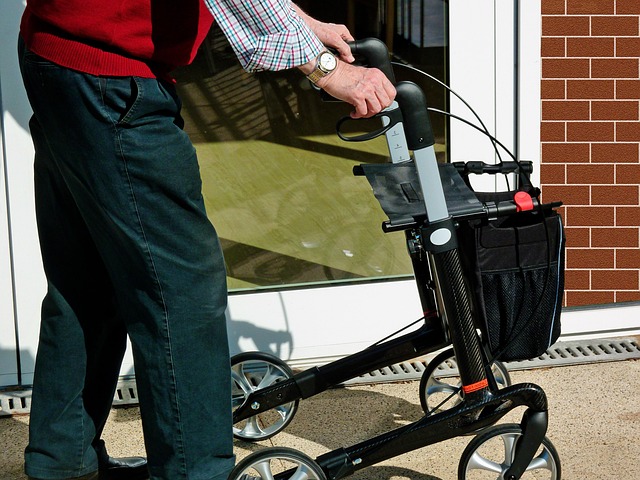Senior Living: Exploring Comfortable Options for the Golden Years
As we age, our housing needs often change, requiring more support and accessibility. Senior living options have evolved to meet these needs, offering a range of choices from independent living to more comprehensive care. This article explores various senior living arrangements, focusing on key features that make them suitable for older adults.

-
On-site amenities like fitness centers and dining facilities
-
Maintenance and housekeeping services
These features allow seniors to maintain independence while having access to support when needed. Senior residences can range from apartment-style living to more comprehensive care facilities, depending on the level of assistance required.
What types of elderly housing options are available?
Elderly housing encompasses a spectrum of living arrangements to accommodate various levels of independence and care needs:
-
Independent Living Communities: Designed for active seniors who can live on their own but desire a maintenance-free lifestyle.
-
Assisted Living Facilities: Provide help with daily activities like bathing, dressing, and medication management.
-
Nursing Homes: Offer 24/7 skilled nursing care for those with complex medical needs.
-
Continuing Care Retirement Communities (CCRCs): Provide a continuum of care from independent living to skilled nursing on one campus.
-
Memory Care Units: Specialized facilities for seniors with Alzheimer’s or other forms of dementia.
Each type of housing offers different levels of support, allowing seniors to choose the option that best suits their current and future needs.
What amenities can you expect in a two-bedroom apartment in a retirement community?
Two-bedroom apartments in retirement communities often come with a range of amenities designed to enhance comfort and convenience:
-
Fully equipped kitchens with modern appliances
-
Spacious living areas for entertaining guests
-
In-unit laundry facilities
-
Private balconies or patios
-
Walk-in closets and ample storage space
-
Emergency response systems
Beyond the apartment itself, residents typically have access to community amenities such as:
-
Fitness centers and swimming pools
-
Libraries and computer rooms
-
Dining facilities with chef-prepared meals
-
Scheduled transportation services
-
Social and recreational activities
These amenities contribute to a vibrant and engaging lifestyle, allowing seniors to maintain an active social life and pursue their interests.
How do retirement communities foster social connections and activities?
Retirement communities recognize the importance of social engagement for seniors’ well-being and offer various opportunities for interaction:
-
Organized group activities like book clubs, art classes, and fitness programs
-
Community events such as holiday celebrations and themed parties
-
Shared dining experiences in communal dining rooms
-
Excursions to local attractions, theaters, and shopping centers
-
Volunteer opportunities within the community and beyond
-
Resident councils and committees for community involvement
These social opportunities help combat isolation and loneliness, which can be significant concerns for older adults. By fostering a sense of community, retirement communities contribute to improved quality of life and overall happiness for their residents.
What features make a home accessible for seniors with mobility challenges?
An accessible home is crucial for seniors with mobility issues to maintain independence and safety. Key features include:
-
Single-story layout or elevator access in multi-story buildings
-
Wide doorways and hallways to accommodate wheelchairs
-
Non-slip flooring throughout the home
-
Lever-style door handles and faucets for easy operation
-
Walk-in showers with handheld showerheads and built-in seating
-
Raised toilets with grab bars
-
Lower countertops and cabinets in kitchens and bathrooms
-
Good lighting, including motion-sensor lights in key areas
-
Stair lifts or ramps for exterior access
These modifications can significantly improve quality of life for seniors with mobility challenges, allowing them to navigate their living space safely and comfortably.
What are the typical costs associated with different senior living options?
When considering senior living options, it’s important to understand the associated costs, which can vary widely based on location, amenities, and level of care provided:
| Senior Living Option | Average Monthly Cost | What’s Typically Included |
|---|---|---|
| Independent Living | $1,500 - $4,000 | Housing, utilities, some meals, activities |
| Assisted Living | $3,000 - $6,000 | Housing, personal care, meals, activities |
| Nursing Home Care | $7,000 - $10,000 | 24/7 skilled nursing care, all meals, therapies |
| Memory Care | $4,000 - $8,000 | Specialized care for dementia, secure environment |
| CCRC Entrance Fee | $100,000 - $1 million+ | One-time fee for lifetime access to care continuum |
Prices, rates, or cost estimates mentioned in this article are based on the latest available information but may change over time. Independent research is advised before making financial decisions.
It’s important to note that these costs can vary significantly depending on geographic location, with urban areas generally being more expensive than rural ones. Additionally, the level of luxury and amenities offered can greatly impact the price. Some seniors may be eligible for financial assistance through programs like Medicaid or veterans’ benefits, which can help offset these costs.
Choosing the right senior living option involves careful consideration of one’s current and future needs, financial resources, and personal preferences. While the costs can be substantial, many seniors find that the benefits of a supportive community, accessible living spaces, and available care services significantly improve their quality of life in their golden years.






